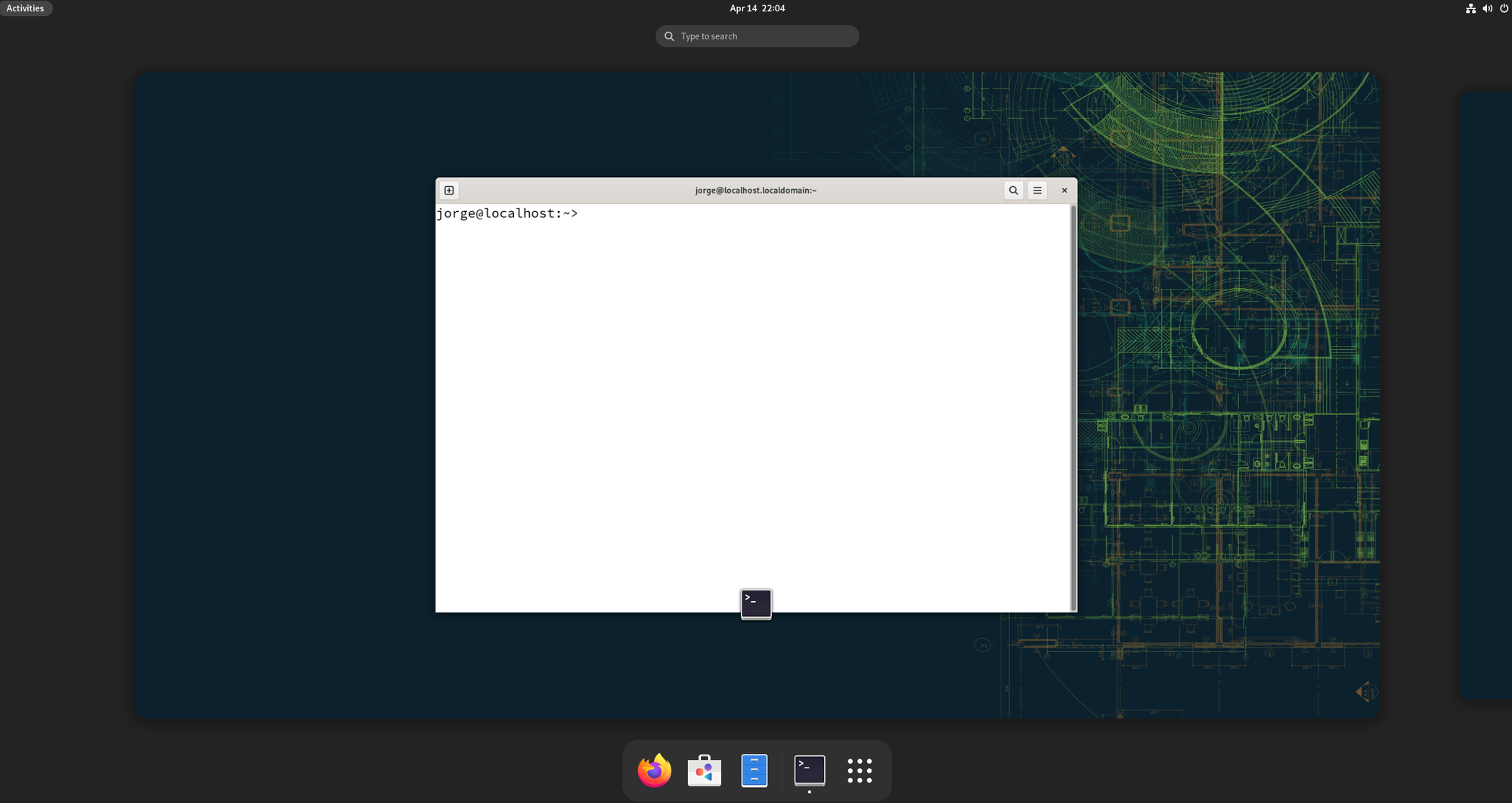It's been long overdue for me to check in with Team Green, so I spent some time this evening catching up on my openSUSE MicroOS desktop. If you're unfamiliar with it check out my awesome-immutable list, which has links to introductory videos and basic concepts. Also sorry to my geekos for not talking about this earlier, since there's never any reason to reinstall I wasn't aware of the nice first-run improvements in MicroOS!
Though I've mostly been talking about Fedora Silverblue for the past 9 months or so, let's not forget that there are multiple ways to do things, and of course there are going to be multiple implementations of image-based desktops, so let's take a look. Note that in this blog post I won't be looking at Kubic since you cloud nerds already know wassup, I'll be looking at desktop today:

Well, that's boring, that just looks like normal openSUSE Tumbleweed! Yeah, similar to Fedora, openSUSE's version is built on the same infra, so same bits, just delivered differently and with a different model than a traditional linux distro, that is a small, slim image-based core with a clean seperation of applications on top via flatpaks and containers.
My interest was piqued when openSUSE announced the Adaptable Linux Platform, which reads to me like the next-gen building blocks for their enterprise products. Of course I immediately thought, finally, someone is bringing image-based desktops to the enterprise, and I really hope this is what they're doing, anyway, let's see what it looks like today:

Bookmark that page, you'll need it if you're getting started. The biggest difference right off the bat is Silverblue is based off of rpm-ostree, while MicroOS is using btrfs with snapshots to offer the read-only parts of the filesystem. This means that packaging and layering are different. It also means that you'll be using pkcon install package rather than rpm-ostree install package. I found using pkcon to be fine once I got used it, it's not like we're touching host things that often, the day to day workflow is the same, flatpaks and toolboxes. I prefer to use the more featureful distrobox, which I found in the openSUSE repo so I was able to install that and then do the "normal" distrobox/podman set up. I appreciate that automatic updates are on by default.
Here are some other interesting things I noticed vs using Fedora Silverblue:
- MicroOS follows Tumbleweed, where as Fedora Silverblue follows the Fedora releases, that means it's 34, 35, 36, etc. MicroOS is a rolling distribution, so there's no major releases to track. As of this writing it's using GNOME 42 and Linux 5.17
- Installation of the official Mozilla Firefox flatpak out of the box on first login. I found this to be a great experience, no distro Firefox to remove, just the official bits from upstream.
- Speaking of, I find the lack of a distro flatpak remote to be useful, I find this confuses people when trying Silverblue. openSUSE just gives me the core OS + an (unfiltered) Flathub, I strongly prefer this method as the software center is how you'd want to present it to users without having multiple software sources.

- For GNOME extensions they include the Extension Manager, which allows us to search, browse, and install GNOME extensions from one UI, as well as configure them. Since extensions.gnome.org won't work due to sandboxing, this is a must have and I'm glad they included it by default!
- No seperate ISOs for GNOME or KDE. You just pick one from the installer and go, I didn't have time to test the KDE install, but hopefully one of you out there will give it a whirl! They're working on an alternate installer as well.
It's an exciting time for Linux clients, as of this writing Fedora, openSUSE, EndlessOS, nixOS, and SteamOS are all pushing the client where it's needed to go for years. I sincerely hope ALP brings that level of reliability to the enterprise desktop since that's a hole that's been missing in my life. :D
Both MicroOS and Fedora have covered the leading edge well for a while now, SteamOS has that use case covered, and EndlessOS 5.x is shaping up to be the flag-bearer for the Debian side of the house, it will be an interesting year and I'm looking forward to seeing how everyone improves!
